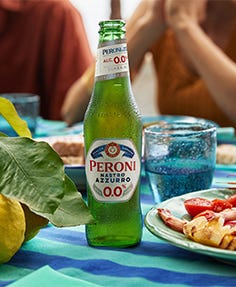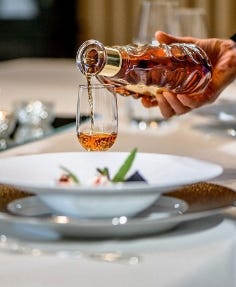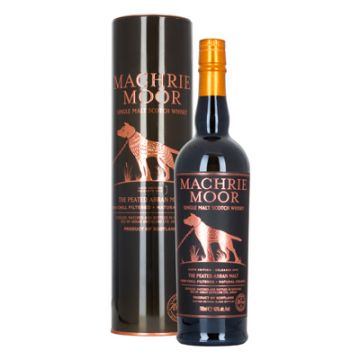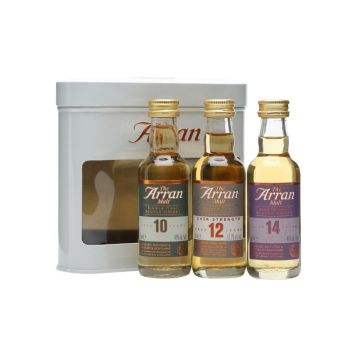Arran Whisky
A dynamic new force in the scotch whisky industry, Isle of Arran Distillers is one of the few remaining independent distilleries in Scotland. They are based at Lochranza on the Isle of Arran, one of the most beautiful and famous in Scotland which lies off the West Coast between Ayrshire and Kintyre. The company was set up by Harold Currie, who was previously Managing Director of Chivas (Seagrams) and House of Campbell (Pernod Ricard). Arran is a unique island known as Scotland in Miniature, for it has all of the scenery of Scotland, with mountains and lowlands, glens, lochs and royal castles (including one at Lochranza). Early in the 19th century there were more than 50 whisky distilleries on Arran, most of them illegal and carefully hidden from the eyes of the taxmen. The malt was acclaimed at the time as the best in Scotland, only rivalled by those from the Glen of Livet. In 1995 they opened a new distillery on Arran, in one of the most beautiful locations in Scotland. They use only the traditional methods of distilling, with wooden washbacks and copper stills designed to their exact specification. The location offers perfect water for whisky production, cleansed by granite and softened by peat as it comes down from the mountain above. The atmosphere of sea breezes and clear mountain air together with the warm flow of the Gulf Stream matures the Arran Malt to perfection in earth floored warehouses. They are now developing sales of their brands, across the world in Europe, Asia and the Americas. Arran is a unique island, and their products are similarly unique. They use no peat in the production process and no caramel for artificial colouring - unlike most other whisky companies. As a result their products are rightly described as the true spirit of nature. Production commenced at 14.29 on Thursday 29th June 1995 and during the official opening ceremony on August 17th two golden eagles, who live on the mountain behind the Distillery, provided a fly past as a thank you for halting building work for several weeks to allow them to hatch their chicks. On a warm summers day they can still be found, floating high on the thermal currents, before dropping like a stone hunting in their quarry.


















































































